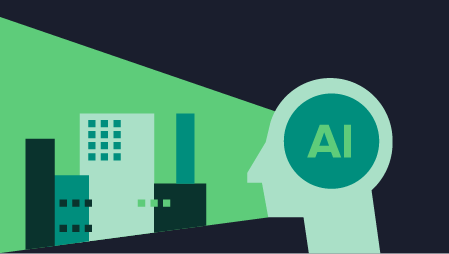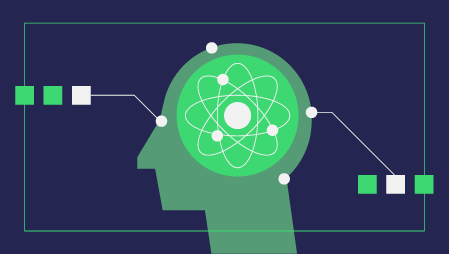As big data gradually comes into play in the world of business, machine learning has become one of the most important tools for companies to solve various kinds of problems. Firms across various industries are all trying to incorporate this rising technique into their business and get a competitive edge in understanding their consumers better.
In fact, Google, Apple, Facebook and other major tech firms have been in a race to acquire AI startups focusing on machine learning. In May 2017, Apple acquired a California-based startup Lattice.io for around $200 million. The startup specialized in using machine learning techniques to make “dark data” machine readable. This only goes to say how the industry leaders too believe in the power of machine learning.
In this machine learning guide, we’ll help you understand the basics of the technology, its applications in the real world and the benefits of it in making business decisions.
What is Machine Learning?
>
Machine learning is a subfield of artificial intelligence that uses statistical techniques to teach computer systems to identify patterns and predict possible outcomes from large datasets. With machine learning, computer systems are automatically able to improve their ability to conduct certain tasks through “self-learning”.
A more instinctive understanding of machine learning might follow the question raised by the British computer scientist, Alan Turing: “Can a machine think?”
Basically, machine learning transforms the computer system into a “thinking machine” that is able to learn and improve without being explicitly programmed.
Machine learning does not use programming to “teach” a computer to master different rules and make corresponding decisions. Rather, machine learning trains the system to learn from large datasets, teaching it statistical techniques to make generalizations and create models from the patterns of previous datasets.
Along the process, the computer system never gets “stuck” as the real world problems and market needs are constantly changing as a result of a specific condition. . The system learns to use these changes in datasets to extract actionable and meaningful data.
A simple metaphor might help you differentiate machine learning from traditional programing is: traditional programming teaches the system that a piece of leaf is oval-shaped and green. However, it will fail to identify a leaf that is yellow or a leaf that is not oval-shaped.
However, with machine learning technique, the computer is trained by large datasets. It has technically seen a large variety of leaves and is thus able to identify a leaf even if it is an outlier.
Machine learning can be broken down into two techniques: supervised learning and unsupervised learning.
Supervised learning enables the system to identify patterns within the input data, whereas unsupervised learning trains the system to form a model from the input and output data in order to predict future outcomes.
Machine Learning for Business – Real World Cases
>
One of the most exciting things about machine learning is that it is used in almost all aspects of our daily life (even though you might not realize it). It can already be seen across a large range of industries such as retail, technology, finance, and agriculture. Below are a list of fields where machine learning techniques are employed on a day to day basis.
1. Speech Recognition
People are always amazed, or even amused when they ask Siri a funny question like “Do you love me?” and end up finding that Siri can somehow understand what they mean.
Machine learning techniques are employed in voice recognition systems such as Siri and Cortana to intimate human languages. From a large dataset of human speech, the apps gradually learn to understand, and mimic the human language – the tone, the cadence, the meaning and other aspects.
2. Face Recognition
Have you found it amazing when you upload a photo to Facebook, and Facebook can automatically identify the faces of all your friends?
Machine learning enables face recognition functions on platforms such as Facebook. With its adaptive technology to memorize the faces being tagged before, machine learning is able to recognize familiar faces from your contact list.
3. Fraud Detection
Whereas traditional linear fraud detection algorithms are usually unable to adapt to the changing world, machine learning techniques help companies deal with such complexity.
For instance, Paypal implements machine learning techniques to detect fraud, training the computer system with Paypal’s large dataset of consumer information. Thus, the system is able to learn the pattern of consumers’ financial information, social network and recent activity to determine the consumer’s reliability and motivations.
4. Search Engine
When you type a word into Google Search, different suggestions of the intended search will appear according to your previous searches. This is because a machine learning algorithm of Google – RankBrain. It studies the pattern of user searches and identifies the motivation of the searchers. This enables the system to predict the next few searches of the users.
5. Smart Reply
Google’s smart reply function is another application of machine learning. Two aspects of machine learning are involved in this case: first, incoming emails serve as a dataset for the system to “learn” the pattern and decipher the meanings of the text. Next, machine learning enables the system to predict possible outcomes and thus automatically suggest options of reply to the emails.
Apply Machine Learning to Business Decisions – What are the Benefits?
>
1. Improve Market Segmentation
In terms of marketing, companies segment their customers into different groups with different needs and preferences in order to address the demand of each group, better. However, dividing their customers has always been a difficulty, as there are so many criteria to determine such segmentation.
Machine learning deals with the real world complexity where everything is constantly changing and conditional on situations. Thus, companies can use unsupervised learning techniques to study the existing pattern of purchasing behaviors and consumer information, in order to identify similarities and create specific market segments of the consumers.
2. Personalize Your Service and Enhance Customer Experience
Spotify recommends songs according to your tastes. Google suggests searches tailored by your previous search records. Even a website you have never used, show ads of the type of products you might want to buy.
By learning from large datasets of customer information, machine learning enables the business to really understand the needs of customers and thus create engaging content that addresses the demand of different market segments.
For the business, machine learning provides a low-cost tool to achieve this goal. For customers, machine learning enables them to conduct a search, buy a product or find a new song with more ease — a win-win situation.
3. Risk Management
Machine learning provides a low-cost and more convenient alternative to manual reviews for fraud detection. Like in the Paypal case, machine learning trains the system to learn rules of transaction from large datasets of historical transactions, user activities and network information. After the system learns the pattern of transactions, it is then able to detect fraud by recognizing abnormal pattern of transactions.
Compared to slow manual reviews, machine learning can be conducted on a large-scale, improving both the efficiency and the efficacy of fraud detection. For instance, machine learning can be leveraged in the transaction monitoring of Anti-Money Laundering (AML) compliance, identifying trade anomalies.
4. Facilitating the Hiring Process
The job market today is becoming more and more competitive. Statistics from Glassdoor show that on an average, each corporate job opening attracts 250 resumes, of which only 4-6 will be selected for an interview and only one will get the job.
This situation is a great challenge for HR to sift through tons of applications. Machine learning enables computers to take up part of the job of the HR staff so that they can allocate their time on communication related work rather than repetitive administrative tasks. Machine learning can schedule interviews and meetings, form reports based on recent trends in the job market (which is already used in the LinkedIn job reports), and streamline the other HR tasks.
5. Predictive Analysis
Supervised machine learning enables the system to form a model that predicts possible outcomes. It is often used to make business predictions.
In marketing, machine learning not only makes generalizations of consumer behavior from the existing dataset, but also predicts future patterns – what types of products are most likely to be purchased by a certain group of people?
However, such predictions are not just limited to the retail industry. In the airline industry, machine learning helps predict the number of passengers for a future flight. In the finance industry, machine learning predicts the future fluctuations in stock prices.
Simply put, the technology can be used for predicting how consumer interactions can change over time.
Still confused how machine learning can benefit organizations?
Our course on machine learning and predictive analytics will provide you with:
- The basics of machine learning and predictive analytics
- The operational types of machine learning
- The current state of machine learning across industries
- Real world use cases of machine learning
- How your organization can benefit from machine learning




